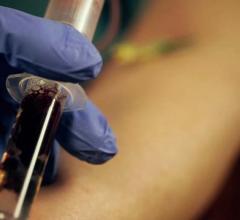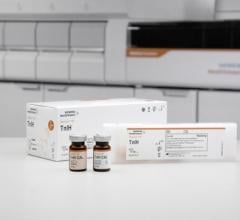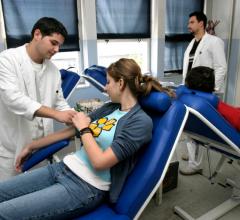
October 11, 2013 — CardioDx Inc. announced results of two studies indicating that Corus CAD, a blood-based gene expression test, may help reduce unnecessary cardiac testing and costs by aiding clinician decision-making in the evaluation of women with obstructive coronary artery disease (CAD) symptoms. The studies were presented at The North American Menopause Society (NAMS) 2013 Annual Meeting in Dallas, Texas.
The first study, "The Clinical Utility of a Novel Genomic-Based, Gene Expression Test in a Registry Study of Women Evaluated for Symptoms Suggestive of Obstructive Coronary Artery Disease in the Ambulatory Care Setting: Results from the REGISTRY I Study," included a total of 180 female patients who possessed non-acute symptoms suggestive of obstructive CAD at six community-based primary care practices. The primary outcome in this pre-specified, subgroup analysis was the association between the Corus CAD score, ranging from 1 to 40, and referrals to noninvasive and invasive cardiac testing among female patients based on the test score. The study found that each 10-point decrease in the Corus CAD score was associated with a 13-fold decrease in the likelihood of referral for further cardiac testing (P < 0.001). Furthermore, the observed rate of referrals in low-scoring patients (</= 15) was 5 percent, 94 percent lower than the referral rate seen in elevated-score patients (> 15) (P < 0.001). The results of this study suggest that real-world use of Corus CAD in primary care practices early in the assessment of obstructive CAD may help optimize patient care and reduce unnecessary cardiac testing.
“Our study of a real-world registry found that a sex-specific, blood-based gene expression test may help clinicians quickly and accurately eliminate obstructive CAD as the cause of their patients' symptoms early in the stream of care, thereby allowing them to investigate other origins of patients' symptoms," said Joseph Ladapo, M.D., Ph.D., and assistant professor of medicine, department of population health and medicine, New York University School of Medicine.
A second study presented at the meeting focused on the potential economic savings of using Corus CAD early in the stream of care to evaluate patients with suspected CAD. The study included 57 female patients, without known CAD, presenting with non-acute chest pain and atypical obstructive CAD symptoms. A change in cardiac diagnostic testing strategy was noted in 34 women (60 percent) post-Corus CAD testing (P < 0.001). When per-procedure costs were applied to the study results, a 22 percent savings in cardiac diagnostic testing costs was realized. Cardiac test utilization in the 57 women showed a pattern of decreased testing costs post-Corus CAD scores versus the matched control group ($2,504 per patient versus $1,960), yielding a $544 per-patient cost-savings in cardiac diagnostic testing.
For more information: www.cardiodx.com


 October 09, 2019
October 09, 2019 








